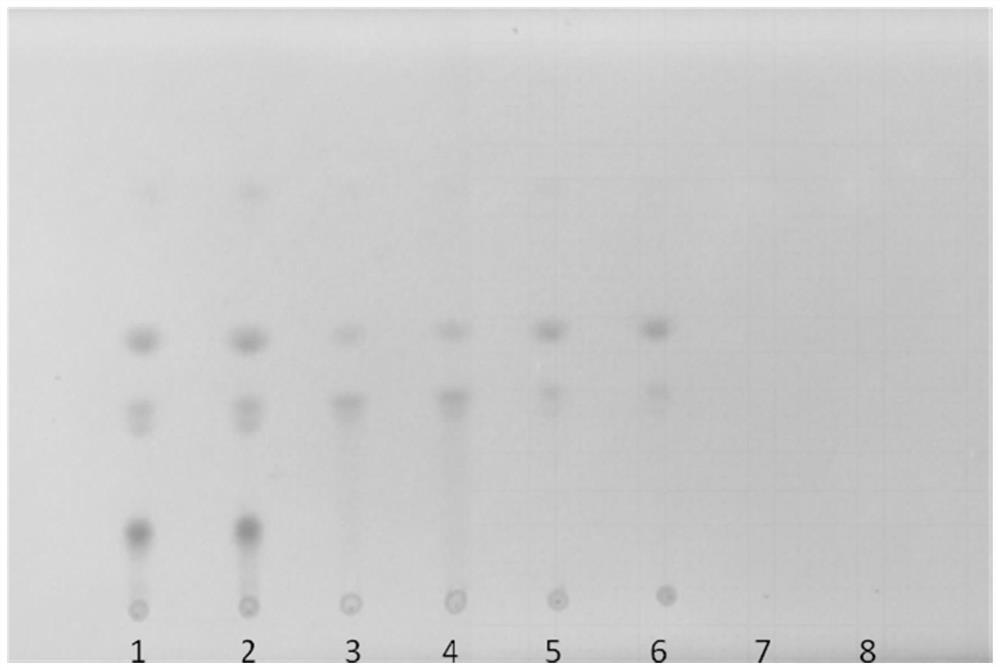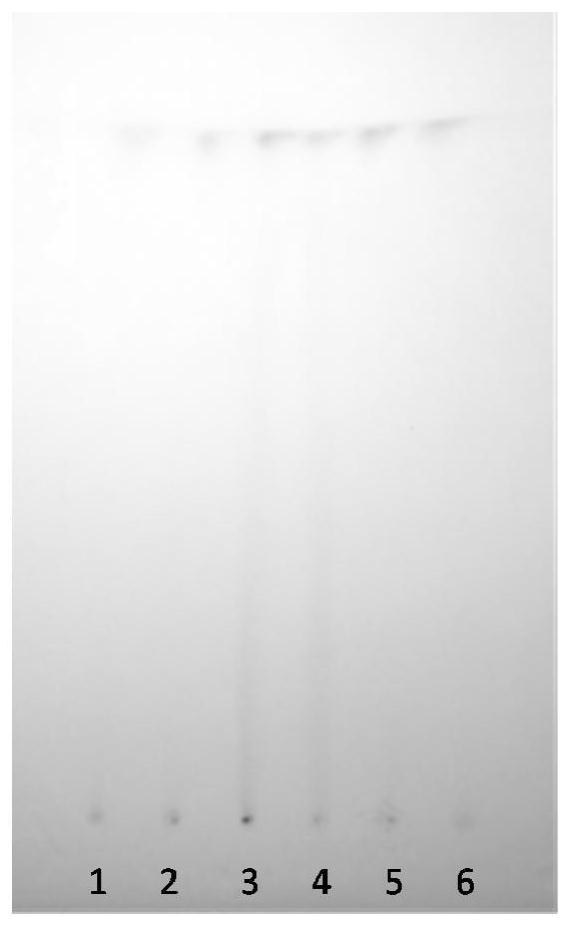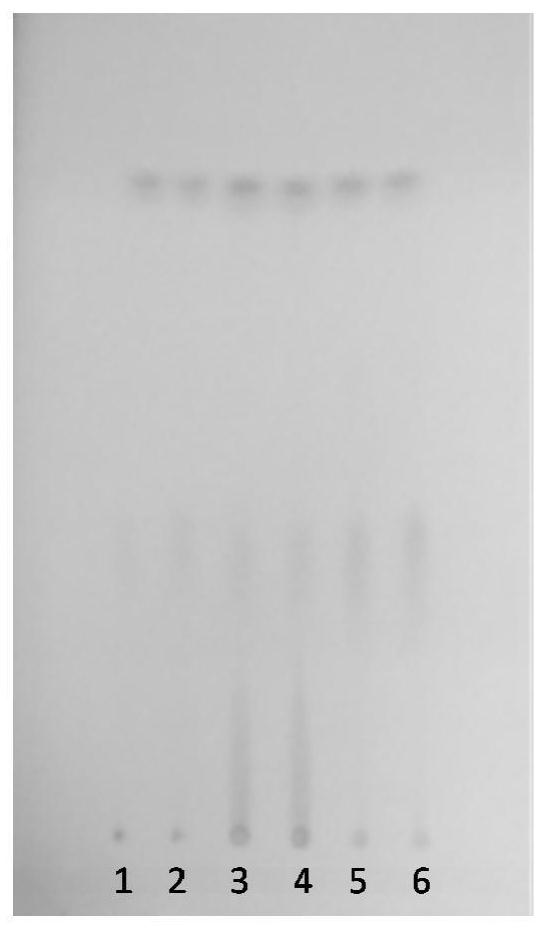A TLC detection method of Chinese medicinal material Rhubarb palmatum
A detection method and technology of rhubarb palm leaf, applied in the direction of measuring device, material separation, analysis of materials, etc., can solve the problem of no report, etc., and achieve the effect of clear discrimination, easy discrimination, and good development effect.
- Summary
- Abstract
- Description
- Claims
- Application Information
AI Technical Summary
Problems solved by technology
Method used
Image
Examples
Embodiment 1
[0043] Embodiment 1 Detection method of the present invention
[0044] (1) Preparation of medicinal material solution
[0045] Take 0.75g of the rhubarb powder to be tested, accurately weigh it, put it in a conical flask with a stopper, add 10ml of 85% ethanol, ultrasonicate twice for 15 minutes each time, filter, combine the filtrates, evaporate the filtrate to dryness, add 10ml of water to the residue Dissolve, shake and extract 2 times with dichloromethane, 15ml each time, combine the dichloromethane solution, evaporate to dryness, add 1ml methanol to the residue to dissolve, and use it as the test solution.
[0046] (2) TLC detection
[0047] Take 3 μl of the above-mentioned test solution, use methanol as a blank solvent, spot on a silica gel plate, and develop with petroleum ether (30°C-60°C)-n-hexane-ethyl acetate-formic acid (4:12:6:0.2) Expand the agent, take it out, dry it, smoke it in ammonia vapor, and inspect it in sunlight.
[0048] (3) Result judgment
[0049...
experiment example 1
[0051] Experimental Example 1 Identification of Rhubarb palmatum
[0052] (1) Preparation of medicinal material solution
[0053]Take 0.75g of rhubarb palmatum, rhubarb tangutata and medicinal rhubarb powder respectively, weigh them precisely, put them in a stoppered conical flask, add 10ml of 85% ethanol, ultrasonicate twice for 15 minutes each time, filter and combine the filtrates , the filtrate was evaporated to dryness, the residue was dissolved by adding 10ml of water, extracted twice by shaking with dichloromethane, 15ml each time, the dichloromethane solution was combined, evaporated to dryness, and the residue was dissolved by adding 1ml of methanol as the test solution.
[0054] (2) TLC detection
[0055] Take 3 μl of the above-mentioned test solution, use methanol as the blank solvent, spot on the silica gel plate, and use petroleum ether (30°C-60°C)-n-hexane-ethyl acetate-formic acid (4:12:6:0.2) as the Expand the developer, take it out, dry it in the air, put it...
experiment example 2
[0060] The selection of experimental example 2 detection method developer of the present invention
[0061] (1) Preparation of the reference medicinal material solution
[0062] Take 0.75 g of rhubarb palmatum, rhubarb tanguta and medicinal rhubarb powder respectively, and prepare the reference substance solution according to the method in Example 1.
[0063] (2) TLC detection
[0064] Take 3 μl of the above solution and spot it on the silica gel H thin-layer plate with sodium carboxymethylcellulose as the binder, unfold it with the following expansion system respectively, take it out, dry it in the air, smoke it in ammonia vapor, and inspect it under sunlight, the thin layer Chromatogram see Figure 2-6 , wherein, the serial numbers 1-2 in the figure are rhubarb palmata, 3-4 are rhubarb tangutica, and 5-6 are rhubarb for medicinal use.
[0065] Expanding system I: acetone-methanol-n-hexane-dichloromethane (1:1:1:1);
[0066] Expanding system II: ethyl acetate-absolute eth...
PUM
 Login to View More
Login to View More Abstract
Description
Claims
Application Information
 Login to View More
Login to View More - R&D
- Intellectual Property
- Life Sciences
- Materials
- Tech Scout
- Unparalleled Data Quality
- Higher Quality Content
- 60% Fewer Hallucinations
Browse by: Latest US Patents, China's latest patents, Technical Efficacy Thesaurus, Application Domain, Technology Topic, Popular Technical Reports.
© 2025 PatSnap. All rights reserved.Legal|Privacy policy|Modern Slavery Act Transparency Statement|Sitemap|About US| Contact US: help@patsnap.com



